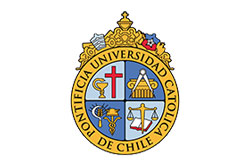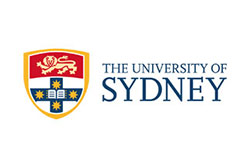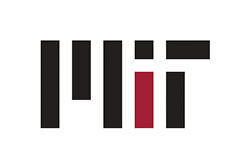Source: Chicago Tribune
CTA planning manager Joe Iacobucci is the first to acknowledge at the transit agency that «if you ask the average person in Chicago what BRT is, you get a blank look.»
BRT, or bus rapid transit, is Iacobucci’s special project. He hopes to transform those blank looks into satisfied smiles.
Yet riders of top-notch BRT service in cities like Bogota, Colombia, and Cleveland might not recognize the CTA’s first foray into BRT as «rapid» — because a much-abbreviated form will hits the streets toward the end of the year on the No. 14 Jeffery Express route between the South Side and downtown.
In its pure form, BRT operates like a transit rail system on city streets. Traffic problems with cars and trucks all but disappear. Bus commuting times dramatically shrink, creating opportunities for quick transit-to-transit connections that could tempt even the most die-hard motorists to give BRT a try.
Under BRT criteria, bus stops are more widely spaced than on traditional bus routes, up to a half-mile apart, to provide quicker trips. The bus lanes are dedicated to buses around the clock, like railroad tracks are to trains.
In addition, passengers pay their fares at stations and then when the bus arrives they board quickly at more than one door on raised platforms that are level with the bus floor. And the buses are equipped with transponders that communicate with traffic signals to give the buses more green lights to pass up other vehicles at intersections.
But the CTA isn’t going down that ultraexpress route, not yet.
In the agency’s upcoming $11 million federally funded BRT experiment on Jeffery Boulevard, the main features will be limited stops; the traffic signal priority for buses on an approximately 11/2-mile stretch (73rd to 84th streets); and part-time bus-only lanes on Jeffery between 67th and 83rd streets (7 to 9 a.m. inbound and 4 to 6 p.m. outbound on weekdays, coinciding with existing parking bans). City officials say they are being careful to implement BRT without imposing major negative impacts, like full-time bus-only lanes, on car drivers.
But the traffic signal priority for buses won’t be ready when the CTA introduces BRT on the No. 14 route in November or December, according to officials at the CTA and the Chicago Department of Transportation, which is managing the construction.
«My guys tell me the signal priority system will be ready for buses to use sometime within the first quarter of 2013», CDOT spokesman Pete Scales said.
Also delayed until early 2013 is a bypass lane at a traffic pinch point on Jeffery at Anthony Avenue, near an entrance to the Chicago Skyway toll bridge. The northbound bypass lane, or queue jump, will be equipped with a special traffic signal to give buses a head start on other traffic to move faster through the intersection and under the viaduct, officials said.
BRT-related construction is scheduled to start Monday at 67th Street and Jeffery, Scales said.
To build excitement about BRT, the CTA has surprises that it is keeping under wraps for now. The BRT buses starting on Jeffery will have a bold color scheme and branding on the outside of the vehicles, said Iacobucci, who is the CTA’s manager of strategic planning and policy. Monitors inside the buses will provide Bus Tracker and Train Tracker information.
The buses themselves will be the 60-foot accordion-style buses currently in use on the No. 14 Jeffery Express, which will become the BRT service. The No. 15 Jeffery Local route will continue without changes.
New shelters with the BRT branding and information kiosks will be built at bus stops, which will be spread out up to 1/2-mile apart on the No. 14 route, officials said. A «showcase BRT station,» larger than the CTA’s current JCDecaux bus shelters and outfitted with lights, will be built at the 71st Street bus stop, which is one of the busiest on the route, officials said.
No fare increase will be imposed on the BRT route, at least for now, officials said.
Corporate naming-rights sponsorships of BRT service may be added in the future, city and transit officials said. Mayor Rahm Emanuel has also said that BRT projects are potential candidates for use in his planned Infrastructure Trust that involves private-sector investment. The move could open the door to the first privatized CTA bus routes and premium fares matched to the premium-level service, officials hinted.
The current focus, however, will be to spur improvements over the snail-like 9 mph average speed of CTA buses, officials said. Still, the modest experiment is a far cry from CTA plans unveiled only two years ago to help address the city’s congestion crisis.
By now double-long buses stopping only about once per mile were to be serving part of an eventual 50-mile network on four major Chicago arterial streets and increase average bus speeds by as much as 48 percent over buses operating in traffic on regular bus routes. In 2008, the CTA and city were awarded, then later forfeited, a $153 million federal grant for the BRT project. The grant was rescinded after a deadline was missed for the city to develop a congestion-pricing parking meter program aimed at reducing the number of automobiles downtown.
With gridlock worsening on Chicago’s streets and a slower growth in bus ridership than on rail, CTA officials say they are compelled to act. They consider the 16-mile No. 14 Jeffery Express route the perfect place to test BRT because it traverses a range of traffic conditions, from residential neighborhoods and retail districts to Lake Shore Drive for miles and downtown serving Union Station and Ogilvie Transportation Center.
The slow start to providing faster bus service is intentional, even calculated, Iacobucci said.
«There is a lot of low-hanging fruit that we can use to speed up service with these improvements,» he said. «When we do other projects, the testing we will be doing on Jeffery will be a huge advantage.»
Transit officials plan to follow up with more robust BRT efforts in the central Loop in 2014 and in subsequent years on Western and Ashland avenues when money becomes available.
The big question is whether the initial taste of a world-class bus transit service on Jeffery, minus the bells and whistles, will be enough to whet commuters’ appetite for more. One risk is that the CTA’s watered-down, phased-in substitute could form the public misconception that BRT isn’t much of an improvement over regular express bus service, except for the fancy packaging and higher cost.
Experts said that while it would be great to be able to marshal the resources to roll out a full-blown, «gold standard» BRT system like China has done in the city of Guangzhou, it’s not uncommon for bus rapid transit to be incrementally constructed.
«I think the CTA is taking a smart approach,» said Dennis Hinebaugh, director of the National Bus Rapid Transit Institute at the University of South Florida. «They are saying, ‘Let’s put what we think we need out there and see what happens.’ That’s one of the big benefits of bus versus rail, where you must build the whole system before you start any service.»
If CTA officials decide the Jeffery BRT experiment doesn’t provide the desired travel-time savings, options that include off-board fare payment at bus stops can be added later, Hinebaugh said.
But attention to some details cannot wait or be compromised, he said.
«One of the big things to make sure of at the start is police enforcement of the no-parking hours for the dedicated bus-only lanes,» Hinebaugh said. «You don’t want commercial vehicles that are making deliveries holding up the buses.»
Travel times on the Jeffery BRT route will be reduced by five to seven minutes compared with current express bus times, which are already competitive with service on the nearby Metra Electric District and CTA Red and Green rail lines, CTA officials said.
Some riders on the route said current trip times aren’t the biggest problem.
«The Jeffery buses are already fast enough. What the CTA needs to do is run the service later into the night for people like me who work late,» said Denise Wilson, a South Shore resident who works in North Chicago and faces a long daily commute on the CTA and Metra. The last No. 14 bus of the day leaves downtown about 10:30 p.m. on weekdays and earlier on weekends.
There are already detractors in Chicago who say the CTA has no business messing around with BRT when it should be laser-focused on improving the performance and reliability of existing bus routes, which provide about two-thirds of the 1.7 million daily rides on the system. Bus-bunching and overcrowding on buses remains a big problem, particularly in the downtown area during peak travel periods.
«Bus rapid transit is a disastrous, nonsensical mistake. It’s a gimmick,» Charles Paidock, a leader of the transit group Citizens Taking Action, testified before the CTA board at this year’s budget hearings. «The last thing we want is three types of bus systems within CTA.»
The BRT experiment on the Jeffery corridor, where about 21,000 rides a day are taken, has citywide implications. The CTA’s long-range plans call for the superexpress buses operating on 20 corridors covering almost 200 miles, creating a new transit grid that connects bus rapid transit to existing CTA bus and rail services as well as Metra commuter trains.
CTA President Forrest Claypool emphasized that the its BRT test is a first for the transit agency. He is careful to avoid calling it BRT, or even «BRT Lite» anymore, a term he initially adopted after taking office more than a year ago.
«I think it’s important to understand that Jeffery is testing various elements of BRT, but it is not what I think what anyone would call BRT,» Claypool said. «It will cut the commute times for our customers. It will provide a more comfortable and faster ride, but those lessons we learn from that then will be applied to, I guess, a broader BRT.»
¿Comments? ¿Opinions? ¿Similar News? Send them to us!












